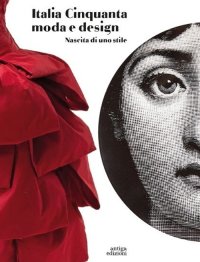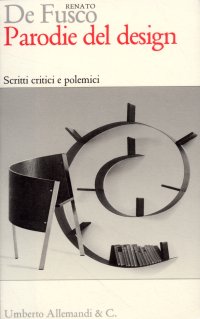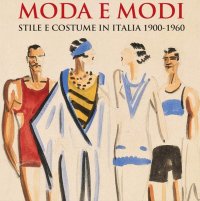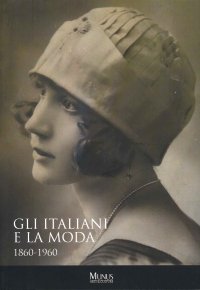Italia Cinquanta moda e design. Nascita di uno stile
Gorizia, Palazzo Attems Petzenstein, 21 marzo - 27 agosto 2023.
A cura di Sgubin Raffaella, Carla Cerutti e Enrico Minio Capucci.
Cornuda, 2023; cartonato, pp. 336, ill. col., cm 20x26.
prezzo di copertina: € 33.00
|
Libri compresi nell'offerta:
Italia Cinquanta moda e design. Nascita di uno stile
Gorizia, Palazzo Attems Petzenstein, 21 marzo - 27 agosto 2023.
A cura di Sgubin Raffaella, Carla Cerutti e Enrico Minio Capucci.
Cornuda, 2023; cartonato, pp. 336, ill. col., cm 20x26.
OMAGGIO (prezzo di copertina: € 33.00)
Parodie del design. Scritti critici e polemici
Torino, 2008; br., pp. 94, 8 ill. b/n, cm 12,5x19,5.
OMAGGIO (prezzo di copertina: € 12.00)
Moda e modi. Stile e costume in Italia 1900-1960
Arezzo, Basilica di San Francesco, 24 marzo - 4 novembre 2018.
Roma, 2018; br., pp. 96, ill. col., cm 21,5x21,5.
OMAGGIO (prezzo di copertina: € 25.00)
Gli italiani e la moda. 1860-1960
Stra, Museo Nazionale di Villa Pisani, 8 aprile - 1 novembre 2017.
A cura di Alberto Manodori Sagredo.
Roma, 2017; br., pp. 94, ill. b/n, cm 16x23.
OMAGGIO (prezzo di copertina: € 15.00)
The Eloquent Artist. Construction of Narrative in Early Renaissance Painting
Piergiacomo Petrioli - Smith Alden
Edizioni Pendragon
Bologna, 2024; br., pp. 298, ill. col., cm 17x24.
(Critica d'Arte. 4).
collana: Critica d'Arte
ISBN: 88-3364-713-7 - EAN13: 9788833647135
Soggetto: Pittura,Saggi (Arte o Architettura)
Periodo: 1400-1800 (XV-XVIII) Rinascimento
Testo in: 
Peso: 0.62 kg

Incantevole Puglia. Fra arte, storia e natura. [Edizione Italiana e Inglese]

Il caso Leonardo. Il misterioso fascino di un genio sempre attuale
Gianfranco Venturelli. My life. Among cars, fast boats and slow food
La Scuola di Posillipo. La Natura, il Paesaggio e il Plein Air










